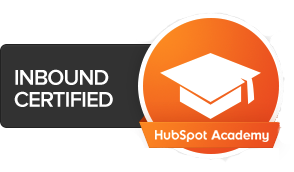As web use continues to grow, more and more online channels are standing out to businesses as new opportunities for customer acquisition. They offer lots of promise and potential, but the market is flooded and it can be hard stand out from your competition.
A simple competitive analysis goes a long way to demonstrating exactly where a particular brand can beat the competition, but many business owners simply don’t know where to start.
With that in mind, we’ve decided to publish the online marketing competitive analysis checklist that we use when weighing up campaign strategy for clients – along with the tools we use to make these assessments:
Key Components of an Online Marketing Competitive Analysis
Choose three competitors, and assess each of the below marketing channels for the competitors and the brand for who the analysis is being performed. Not all of the below items will be relevant or necessary, but this analysis – upon conclusion – should provide a clear indication of the opportunities available to the brand in question.
SEO
- Keyword Rankings (Google search)
- Inbound Links (Ahrefs)
- Indexed Pages (Google search)
- Meta-data (company website source code)
Website Analysis*
- Email subscribe CTA (company website)
- Analytics tracking (site source code)
- UI (company site)
- Mobile compatibility (Mobile Test)
- Content creation (company website)
- Website Traffic (Compete/Alexa/SimilarWeb/ company website – if advertised)
* While we don’t rely solely on the data it offers, we find Hubspot Marketing Grader a useful addition to our own assessment
Social Media
- Channels (company website, social networks research)
- Size (social profiles)
- Engagement (social networks)
SEM
- Keywords (Google/Bing search, meta-data on company website, Google Adwords Keyword Planner)
- Position (Google/Bing search)
- Ad Copy (Google/Bing search)
- Landing Page (company website URL in ads)
Email Marketing
- List size (company website – if advertised, MailChimp and Smart Insight resources for industry relevant data)
- Open rates (company website – if advertised, MailChimp and Smart Insight resources for industry relevant data)
- Clicks (company website – if advertised, MailChimp and Smart Insight resources for industry relevant data)
- Content (company newsletters)
Partnerships
- Who they work with for better visibility (company website, further online research)
- What this relationship looks like (company website – if advertised, partner website – if advertised, further online research)
- What the results are (company website – if advertised, partner website – if advertised, further online research)
SWOT Analysis
- Standard SWOT assessment
Market Trends/Outlook
- How the market looks currently for the industry in question (Google Trends, Trend Watching, Digital Trends, further online research)
- Future predictions (key news sites, Amazon Whitepapers, further online research)
What next?
Following this assessment, you’ll be in a much better position to determine precisely the areas in which the brand in question can generate success online. However, while a great start, it is also quite generic.
A next step will be to perform further competitive analysis on each of the areas you believe should be pursued; concluding your research with a list of recommendations the brand to consider as they weigh up their next move.
Join our mailing group to get actionable marketing advice by email, and ensure that your online presence is stronger and more effective than your competition.
We promise we don't spam, we don't email often, and we'll NEVER share your info with anyone else!



